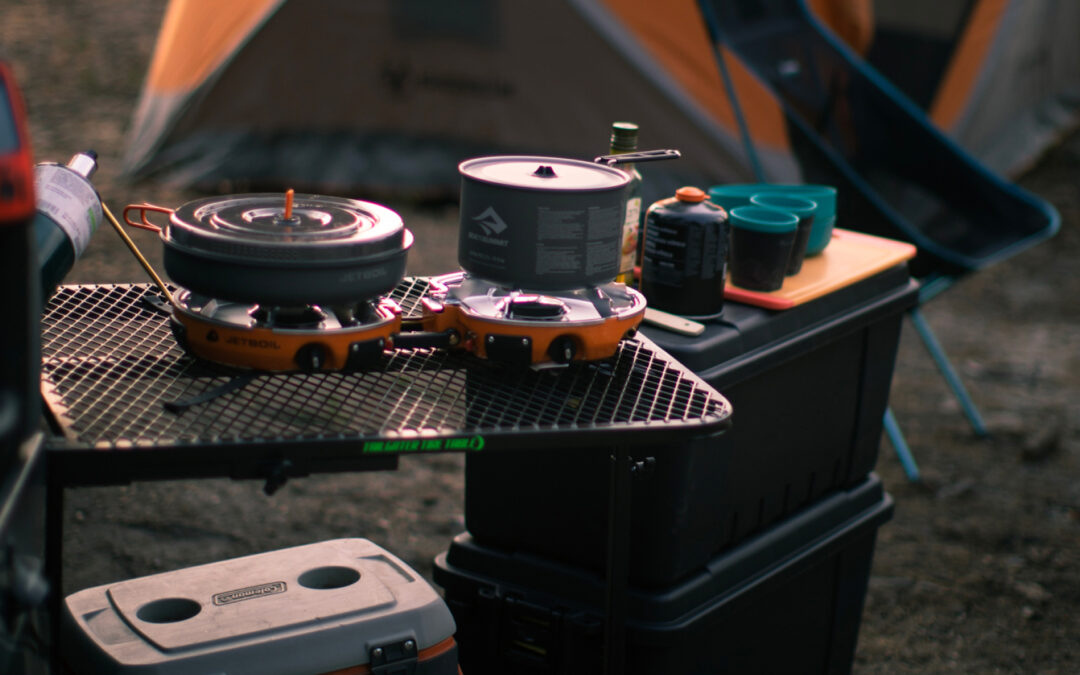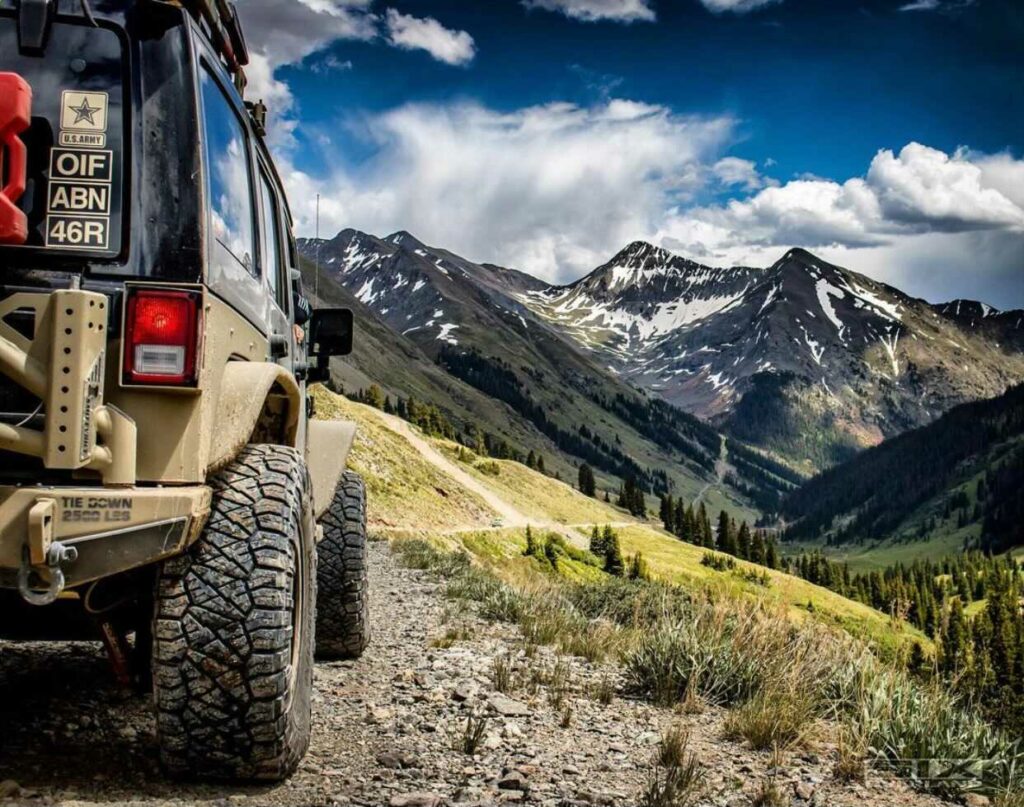When it comes to overlanding, having a well-stocked and organized camp kitchen is essential for a successful and enjoyable trip. Whether you’re planning a multi-week excursion or a weekend getaway, having the right gear and equipment can make all the difference.
From portable stoves and cookware to food storage containers and cleaning supplies, creating an efficient and functional overland camp kitchen requires careful planning and preparation. Let’s explore the essential gear and equipment needed for an overland camp kitchen, as well as checklists and shopping lists to help you get started.
The Camp Kitchen
Building out a camp kitchen can be one of the most rewarding aspects of creating an overland and car camping capable vehicle. There is something deeply satisfying about taking the time to prepare a meal after a full day of adventure travel. And sitting around a campfire and eating your meal under the stars is an added bonus.
Camp Kitchen Gear
The best off-road camp kitchen kits are both compact and versatile. Thanks to the design and innovation of outdoor gear makers, this is easier to achieve than you might think. And it is possible to hit all the outdoor kitchen marks on a budget.
Camp Kitchen Gear Checklist
Here’s a list of considerations as you pack out or revise your set up:
- Stove and fuel: A portable stove is a must-have for any overlanding trip, as it allows you to cook your meals on the go. There are many different types of stoves available, ranging from compact backpacking stoves to larger, more powerful models that can handle larger pots and pans. Make sure to bring enough fuel to last for the duration of your trip. Consider the weight of the stove and how many burners are available to use.
- Cookware and utensils: A set of pots and pans, along with basic cooking utensils such as a spatula, ladle and tongs, will enable you to prepare a wide range of meals on the road. Consider investing in lightweight and durable cookware that can withstand the rough conditions of overlanding.
- Cutting board and knives: You’ll need a sturdy cutting board and at least one sharp knife to chop vegetables, fruits, and meats. Opt for compact and portable options that won’t take up too much space in your storage bins.
- Plates and cups: Don’t forget to pack plates and cups for serving your meals. Lightweight and stackable options are best for overlanding.
- Cooler or fridge: A high-quality cooler or fridge solution is essential for keeping perishable foods fresh during your trip. Consider investing in a heavy-duty cooler that can withstand rough terrain and extreme temperatures.
- Food storage containers: You’ll need a variety of food storage containers to keep your dry goods and snacks organized and easily accessible.
- Cleaning supplies: Dish soap, sponge, and towels are essential for keeping your kitchen clean and hygienic. We keep alcohol wipes in our kit when water needs to be conserved.
- Don’t forget to pack a small trash can and garbage bags for proper waste disposal. Leave it better than you found it.
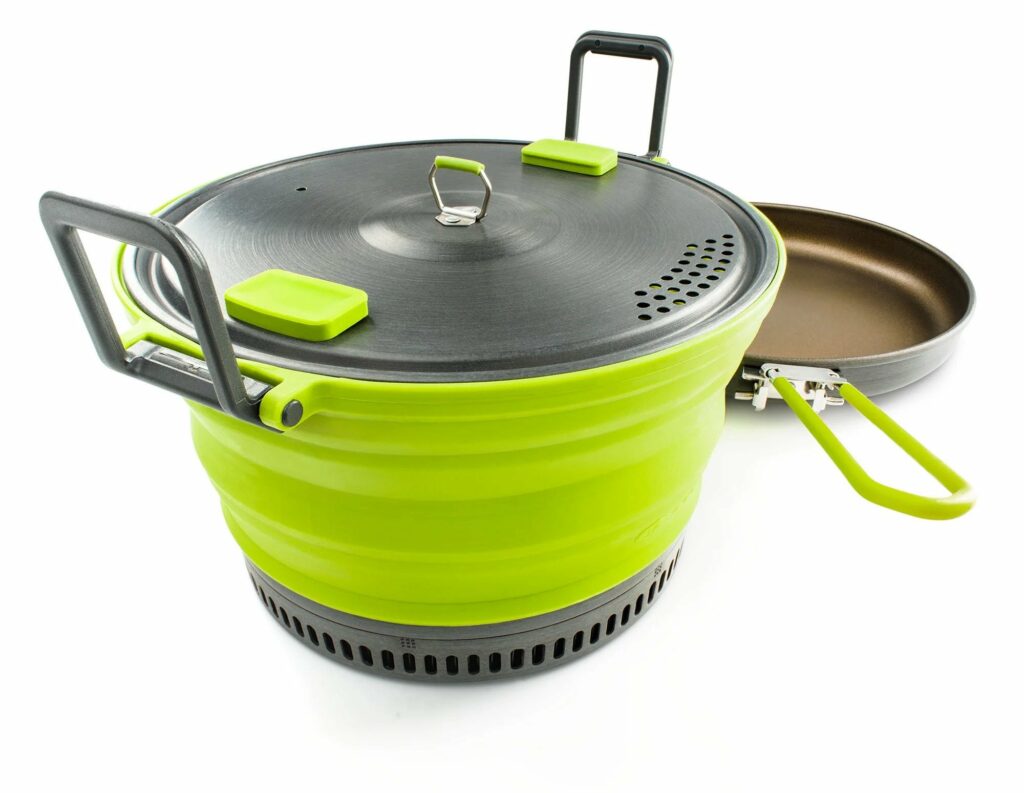
A favorite piece of camp kitchen gear we use is the Escape HS 3 L Pot + Frypan from GSI. It is a pot and pan combo that packs down flat and is an absolute game changer for a camp kitchen packout.
Advice if you are just starting out: Use what you already own, and focus on bringing in one or two pieces of new camp kitchen kit at a time. Get to know your cooking style outdoors because it can vary from your usual recipes and routines.
Once you feel like you have a handle on your go to meals and preparation styles, invest more in the kitchen accessories that will make meal creation the most enjoyable to you.
Camp Kitchen Pantry & Perishables
Once you have your checklist of necessary gear and equipment, it’s time to stock up on the supplies you need for your trip. Here’s where creativity and planning come together. The camp kitchen is best served by versatile ingredients that can be used across many different meals.
One example of this would be packing perishables that can transition from dinner to breakfast. Cherry tomatoes and mushrooms can be mixed together and sauteed with precooked rice to go with a protein at dinner, and then can be used the next morning to cook in with your eggs.
You can use eggs for both breakfast and as an ingredient in a stir fry. A camp stir fry is a great way to use leftovers from previous meals.
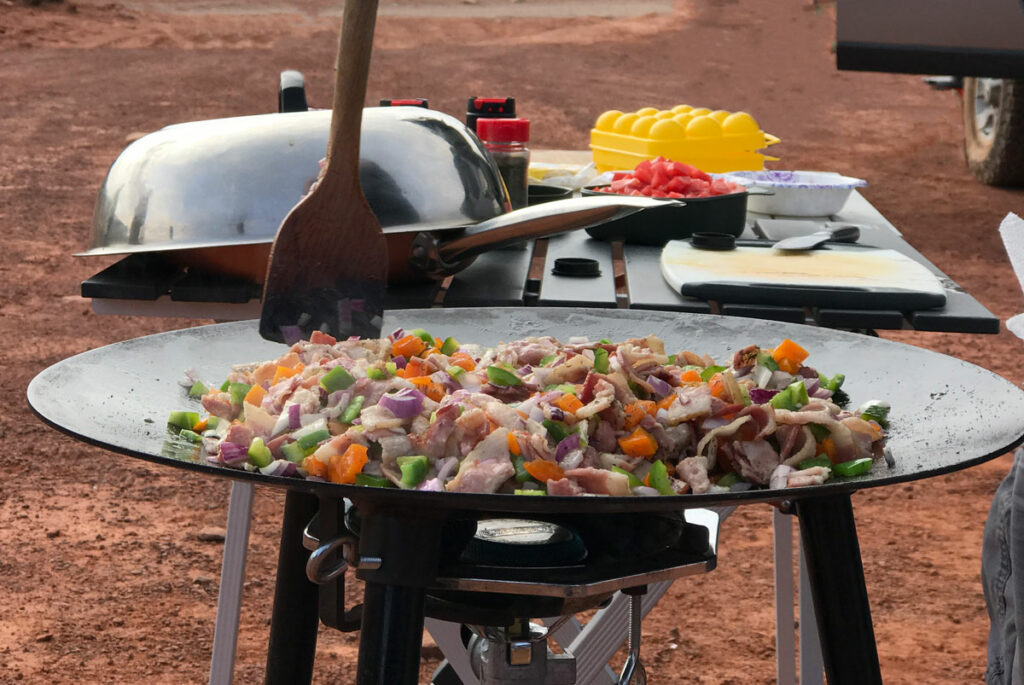
A Tembo Tusk skottle is a great investment for those who cook for their family or usually find themselves feeding everyone on a trip. At $395.00 it’s not an inconsequential investment; however, every single person we know who uses one reports they will never go back to pan and burner.
Once you get going it’s easy to create meals with overlapping ingredients. This will make you pack out simpler and more efficient.
Camp Kitchen Pantry Checklist
Here’s a shopping list of food items to consider for your overland camp kitchen:
- Dry goods: Pasta, rice, quinoa, and other grains are great options for a filling and nutritious meal.
- Spices and seasonings: An important element to any meal! You’ll need your standard S&P plus consider bringing chili powder, garlic powder, an herb blend, a dry rub, hot sauce or any other favorite you use regularly in your kitchen.
- Canned goods: Soups, beans, and vegetables are easy to store and can be heated up quickly on your stove. Don’t underestimate the power of a can of tomatoes to add flavor and depth to a meal.
- Perishables: Fresh proteins, vegetables, cheese and fruits are the ingredients that will make your meal feel special. Consider marinating protein and packing out in a ziplock or tupperware container. Harder cheeses can last longer and be used for just about any meal. Fruit can be turned into a dessert with a few cookies and powdered sugar.
- Dried fruits and nuts: These are perfect for snacking and can provide a quick burst of energy during a long day of driving.
- Jerky: A protein-packed snack that doesn’t require refrigeration and can be stored in a food container.
- Dehydrated meals: Pre-packaged dehydrated meals are a convenient option for a hot meal on the go. A Jet Boil works great if you’re planning on filling your meals with this option.
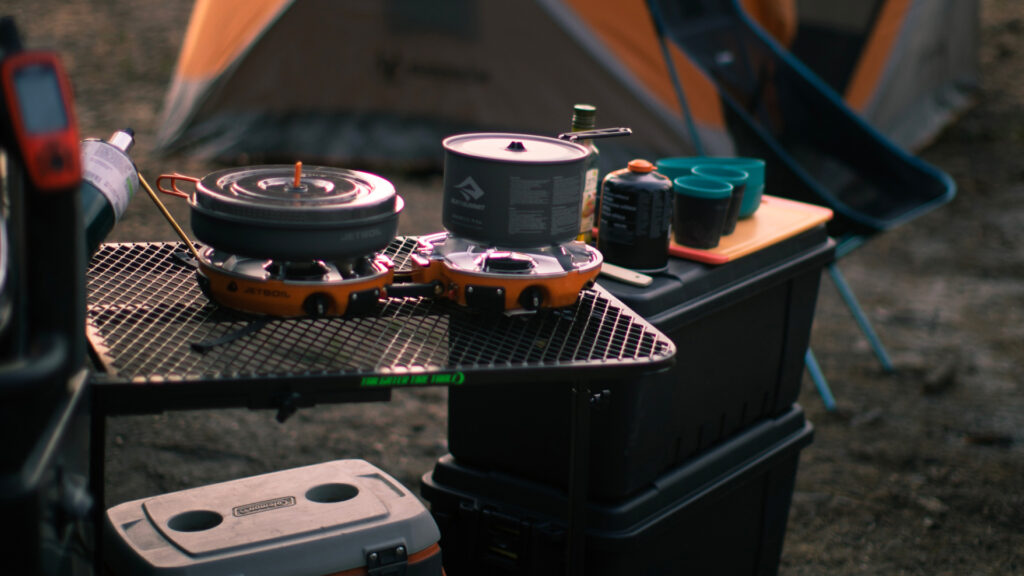
Camp Kitchen Wrap Up
By following these guidelines, you’ll be able to create a functional and efficient camp kitchen that will allow you to enjoy delicious meals while on your overland adventure. So start planning your next trip and happy overlanding!
The Overland Gear Store has a wide range of camp kitchen gear. Head on over to checkout the full collection.
What’s the one tool in your camp kitchen you can’t live without? What ingredients do you always carry? Let us know in the comments.

